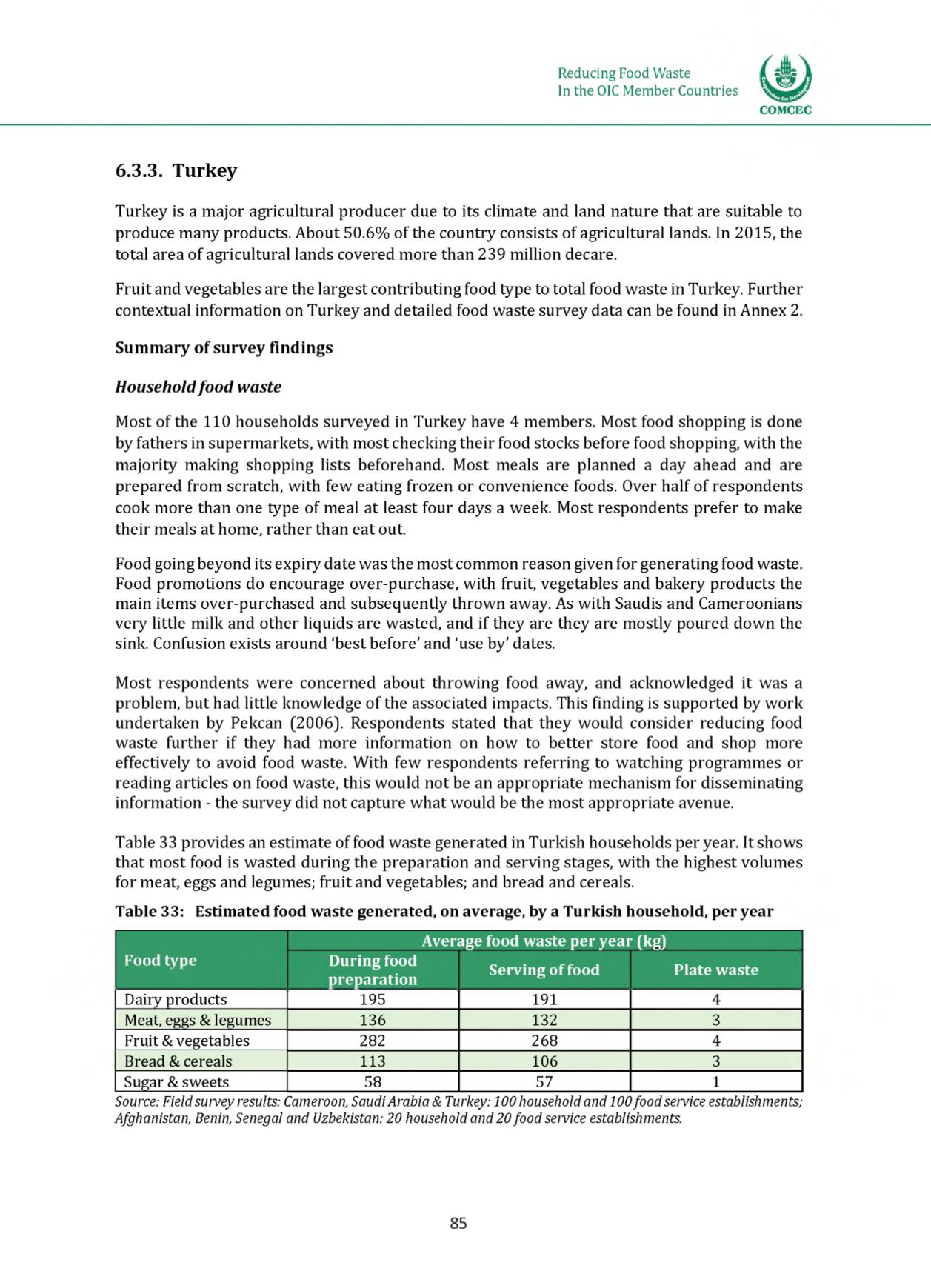

COMCEC
Reducing Food Waste
In the OIC Member Countries
6.3.3. T u rk e y
Turkey is a major agricultural producer due to its climate and land nature that are suitable to
produce many products. About 50.6% of the country consists of agricultural lands. In 2015, the
total area of agricultural lands covered more than 239 million decare.
Fruit and vegetables are the largest contributing food type to total food waste in Turkey. Further
contextual information on Turkey and detailed food waste survey data can be found in Annex 2.
Summary of survey findings
Householdfood waste
Most of the 110 households surveyed in Turkey have 4 members. Most food shopping is done
by fathers in supermarkets, with most checking their food stocks before food shopping, with the
majority making shopping lists beforehand. Most meals are planned a day ahead and are
prepared from scratch, with few eating frozen or convenience foods. Over half of respondents
cook more than one type of meal at least four days a week. Most respondents prefer to make
their meals at home, rather than eat out.
Food going beyond its expiry date was the most common reason given for generating food waste.
Food promotions do encourage over-purchase, with fruit, vegetables and bakery products the
main items over-purchased and subsequently thrown away. As with Saudis and Cameroonians
very little milk and other liquids are wasted, and if they are they are mostly poured down the
sink. Confusion exists around ‘best before’ and ‘use by’ dates.
Most respondents were concerned about throwing food away, and acknowledged it was a
problem, but had little knowledge of the associated impacts. This finding is supported by work
undertaken by Pekcan (2006). Respondents stated that they would consider reducing food
waste further if they had more information on how to better store food and shop more
effectively to avoid food waste. With few respondents referring to watching programmes or
reading articles on food waste, this would not be an appropriate mechanism for disseminating
information -the survey did not capture what would be the most appropriate avenue.
Table 33 provides an estimate of food waste generated in Turkish households per year. It shows
that most food is wasted during the preparation and serving stages, with the highest volumes
for meat, eggs and legumes; fruit and vegetables; and bread and cereals.
Table 33: Estimated food waste generated, on average, by a Turkish household, per year
Average food waste per year (kg)
Food type
During food
preparation
Serving of food
Plate waste
Dairy products
195
191
4
Meat, eggs & legumes
136
132
3
Fruit &vegetables
282
268
4
Bread & cereals
113
106
3
Sugar & sweets
58
57
1
Source: Field survey results: Cameroon, SaudiArabia & Turkey: 100 household and 100food service establishments;
Afghanistan, Benin, Senegal and Uzbekistan: 20 household and 20 food service establishments.
85
















